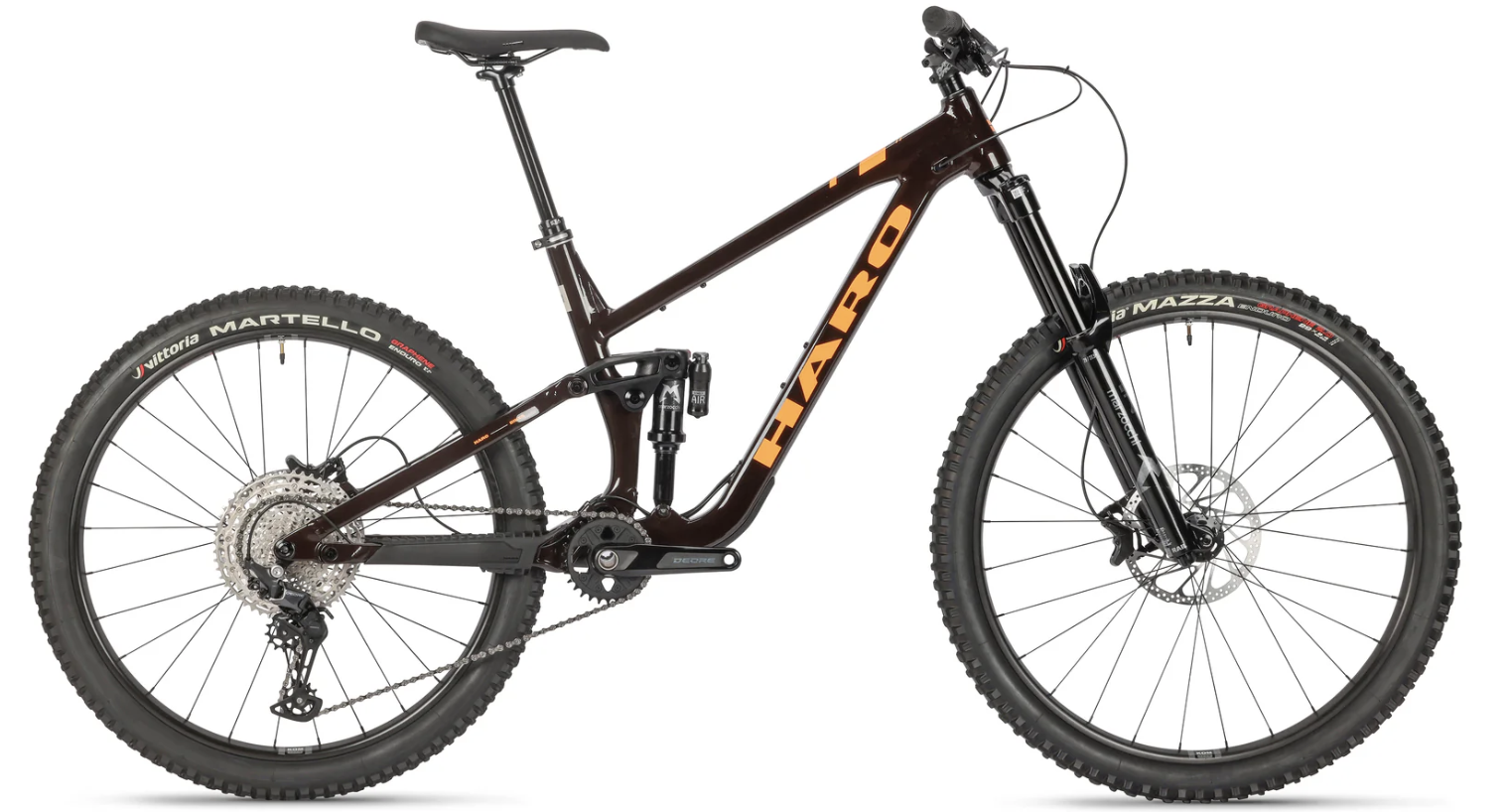Carbon vs. Alloy Mountain Bike Frames: Which One is Right for You?
When choosing a mountain bike, one of the most significant decisions you'll face is selecting the right frame material. The two most common options—carbon fiber and alloy (aluminum)—offer distinct advantages and disadvantages. Your decision will depend on your riding style, budget, and performance expectations.
Let’s dive into the key differences between carbon and alloy frames to help you make an informed choice.

Carbon Fiber Mountain Bike Frames
Carbon fiber frames are made from woven carbon strands bonded with resin, creating a lightweight yet incredibly strong structure. This material is favored in high-performance mountain biking due to its balance of weight, strength, and ride quality.
Key Benefits:
Lightweight: carbon frames are significantly lighter than alloy, making them ideal for climbing, long rides, and technical terrain where maneuverability is crucial. Less weight means improved acceleration and easier handling on tight trails.
Strength & Durability: carbon frames are incredibly strong, particularly in terms of tensile strength. They can withstand substantial impacts while maintaining structural integrity. Unlike metal, carbon doesn’t fatigue over time if properly maintained.
Vibration Dampening: one of carbon’s standout features is its ability to absorb shock and vibrations, providing a smoother and more comfortable ride on rough trails. This can reduce rider fatigue over long distances.
Aerodynamic & Customizable: carbon allows for more complex frame shapes and aerodynamic designs, which can be optimized for speed and handling. Manufacturers can fine-tune carbon layups to create stiffness in key areas while allowing flex where needed.
Drawbacks:
Expensive: carbon frames are typically much more expensive than alloy due to the complex manufacturing process and materials used. Repair costs can also be high if the frame is damaged.
Susceptible to Impact Damage: while carbon is strong, it can be vulnerable to cracking under hard impacts or if struck in a way that compromises its structural integrity. Minor scratches and chips can be more difficult to detect and may require professional inspection.
Repair Challenges: unlike alloy, carbon can be more difficult and expensive to repair if it cracks or suffers structural damage.

Alloy (Aluminum) Mountain Bike Frames
Alloy frames, commonly made from aluminum alloys, have been a staple in mountain biking for decades. They provide a strong and affordable option for many riders, from beginners to experienced shredders.
Key Benefits:
Affordable: alloy frames are generally much more budget-friendly than carbon, making them an attractive choice for entry-level and intermediate riders. They provide excellent value for money without sacrificing performance.
Durability & Strength: aluminum frames are highly resistant to impact damage and can handle rough riding conditions, making them a popular choice for aggressive riders. They’re less likely to crack under stress compared to carbon.
Easier to Repair: if an alloy frame gets dented or damaged, repairs are often more straightforward and affordable than carbon frames. Minor dings and scratches usually don't affect performance significantly.
Stiffness & Responsiveness: alloy frames offer a stiffer ride, which can translate to better power transfer and a more direct feel on the trail. This stiffness can be beneficial for riders who prioritize precision and responsiveness.
Drawbacks:
Heavier: alloy frames are noticeably heavier than their carbon counterparts, making climbing and long rides more challenging. Heavier bikes may also feel less nimble on technical trails.
Less Vibration Dampening: alloy frames don’t absorb trail chatter as well as carbon, leading to a rougher ride on rugged terrain. Riders may experience more fatigue on long descents and rough trails.
Corrosion Potential: although modern aluminum alloys are treated to resist corrosion, exposure to harsh conditions over time can lead to degradation if not properly maintained.
Carbon vs. Alloy: How to Choose the Right Frame for You
Choosing between carbon and alloy depends on your riding goals, budget, and terrain preferences.
Choose Carbon Fiber If:
You prioritize lightweight performance for racing, long rides, or technical climbs, if you’re looking for the smoothest ride possible with excellent vibration dampening, and if you’re willing to invest in a high-end bike for optimal performance.
Choose Alloy If:
You’re on a budget and want a durable, reliable bike with great value, if you ride aggressively and need a frame that can handle impacts without worry, and if you prefer easier maintenance and repairs with lower long-term costs.
Carbon and alloy mountain bike frames have their own advantages and trade-offs. Understanding your riding style, terrain preferences, and budget will help you choose the frame that best suits your needs—whether chasing podiums or enjoying weekend trail rides; Ride on!
